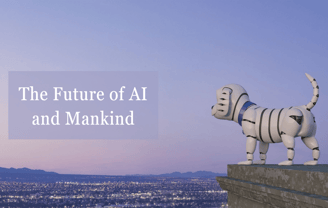The AI Playbook: How Fine-Tuning, RLHF, and RAG shape the Future of GPT models
Himanshu Manghnani
1/31/20253 min read


The AI Revolution Beyond Pre-training
AI has come a long way from its early days of static, pre-trained models. Today, fine-tuning techniques like Reinforcement Learning from Human Feedback (RLHF) and Retrieval-Augmented Generation (RAG) are at the heart of making AI models smarter, more aligned, and factually accurate. These techniques help bridge the gap between raw intelligence and practical, real-world applications.
But how exactly do fine-tuning, RLHF, and RAG work? How do they impact different versions of GPT models like GPT-3, 3.5, 4, and 4 Turbo? And what does the future of AI look like with these enhancements? Let’s dive in.
Fine-Tuning, RLHF, and RAG: The Power Trio of AI
Before we compare their uses, let’s first understand what each of these techniques does.
Fine-Tuning: Making AI Fit for Purpose
Fine-tuning is the process of taking a pre-trained model (like GPT-3 or GPT-4) and further training it on specialized datasets to optimize it for specific tasks.
Example: Training a GPT model on medical literature to generate accurate diagnoses or customer service logs to improve chatbot interactions.
Fine-tuning ensures models adapt beyond general knowledge and become domain-specific experts.
RLHF: Aligning AI with Human Intentions
Reinforcement Learning from Human Feedback (RLHF) is a technique used after pre-training to refine a model’s responses based on human preferences.
How it Works:
Human annotators rank multiple model-generated responses for a given prompt.
A Reward Model (RM) is trained to predict which responses humans prefer.
The base model is fine-tuned using Proximal Policy Optimization (PPO) to generate responses that maximize this reward function.
RAG: Injecting Real-Time Knowledge into AI
Retrieval-Augmented Generation (RAG) enhances AI models by allowing them to fetch external knowledge before generating responses.
How it Works:
A user query is converted into an embedding vector.
The system retrieves relevant documents from an external database.
The retrieved information is appended to the input before generating a response.
Bing Chat, Perplexity AI, and enterprise AI assistants use RAG to provide real-time, fact-based answers rather than relying on static training data.
Each of these techniques plays a distinct role in enhancing AI capabilities, and the most advanced models combine them for optimal performance.
GPT Evolution:
GPT-3 to GPT-3.5 : The RLHF Breakthrough
With GPT-3.5, OpenAI introduced RLHF, significantly improving ChatGPT’s conversational abilities. It made responses safer, more helpful, and aligned with user intent. However, the model still lacked real-time knowledge updates.
GPT-4: Smarter, More Aligned, and Partially Retrieval-Enabled
GPT-4 enhanced RLHF further, reducing hallucinations and biases while improving factual accuracy. Although GPT-4 wasn’t a full RAG model, OpenAI started integrating retrieval-based mechanisms.
GPT-4 Turbo: It combines RLHF, fine-tuning, and RAG more effectively than any previous model.
The Future of AI: A Hybrid Approach?
The next generation of AI models will likely combine fine-tuning, RLHF, and RAG dynamically to create more powerful and reliable systems. Here’s what to expect:
Hybrid AI Models: Combining pre-trained knowledge (fine-tuning), reinforcement learning (RLHF), and external retrieval (RAG) into a single system.
Context-Aware Memory: AI will retain conversational history and past interactions, making responses more cohesive and user-specific.
Real-Time Adaptability: Future models will be able to pull in real-time data from multiple sources and update themselves without retraining.
Safer and More Ethical AI: RLHF will continue to play a crucial role in reducing biases and ensuring AI safety, especially in enterprise applications.
Final Thoughts:
The AI landscape is evolving rapidly. From fine-tuning domain-specific models to RLHF improving alignment and RAG bringing real-time knowledge, the possibilities are endless.
As AI continues to advance, we’re moving towards a future where AI assistants are not just knowledgeable but also adaptive, context-aware, and capable of learning in real time. And that’s the true AI revolution.
Who will win the AI evolution race?
OpenAI, Google DeepMind, Anthropic, and Meta are all investing heavily in hybrid AI models. The next breakthroughs might not just come from technology but also from how these companies push the boundaries of AI safety, accessibility, and real-world utility.
Stay tuned to hear more about the future of AI and Mankind!
It's just getting started...
I'd love to hear your thoughts and opinions; Thanks for reading!
